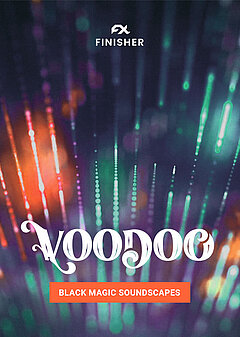How to Find a Melody Quickly
What makes a good melody, when you should copy (and when you shouldn’t), and methods that can defeat writer’s block for good
OCTOBER 4TH, 2020
Melody writing is one of the most difficult topics to teach, and with good reason: it’s far more of an art than it is a science. You may very well have experience writing melodies, but if it takes you hours to finish a single one, it’s easy to be frustrated when you look at the clock. By picking up your speed with melody writing, you increase the efficiency of your entire production process. And it’s a lot more fun when you can finally finish five songs in the same time it once took you to complete three!
How do you start writing?
If it gets stuck in your listeners’ heads, that’s a good start! There are principles that will serve you every time you need to write a new hook and flesh it out into a fully formed melody.
1. Listen to many different genres, and articulate exactly where your influences come from.
You’ll be able to write much faster if you know that your melody was inspired by Zedd, adds a folksy feel from John Mayer, and mimics a Miles Davis tune or two. Diversifying your inspiration ensures that you’re never stealing--rather, the combination of so many different elements will ensure that each song you write is unique, and will prevent you from falling into the trap of sounding like everyone else in your genre.
2. Deliberately write a “bad” melody.
Everyone can do this, regardless of their level of musical expertise! But here’s the thing: when you accomplish what you set out to do, you get a small confidence boost. When your confidence increases, the process of melody writing becomes much easier. After only a short time, you’ll likely find that ideas come more naturally, and their quality increases substantially.
3. Copy one of your favorite melodies exactly, then tweak it until it sounds nothing like the original.
This cuts down on the amount of time you spend staring at a blank screen (a producer’s greatest nightmare), and just getting something written increases your confidence with very little effort. As you change the pitches and rhythm, and add or delete notes, you may find that the editing process is much easier than writing a melody cold.
How to increase your speed
The more reference points you have, the faster you’ll be able to compose. You’re no longer starting out cold, because you already have tons of pre-existing ideas dancing around in your head. The more you combine ideas from different artists and varied genres, the easier it will be to do so again in the future. Much of this comes down to listening and practice, but it’s even more important not to equate speed with quality.
Being a fast writer and being a good writer are two different things entirely, and require separate skills. In the last section we worked on the quality of your ideas and trusting your intuition, but now it’s time to work on your raw speed.
1. Keep writing, no matter what. Welcome poor melodies!
The easiest way to write faster is to eliminate your quality filter, at least at the beginning. All you’re trying to do is get musical ideas into your DAW. Now to add an extra restriction…
2. Refuse to reuse the same melody and harmony ideas from any of your existing projects.
While you should borrow from your favorite artists, you should rarely if ever borrow from yourself. At first, this seems like it would tend to slow you down; after all, you’re cutting off your access to a potential wealth of existing material. But here’s why this is so valuable: by refusing to do anything you’ve already done before, you eliminate a lot of potential judgment, which increases your writing speed significantly. Your brain’s quality filter automatically compares your current work to your best work--and that’s a losing battle. You can attempt to make the current melody sound different, but too far off and it just doesn’t seem to have the same impact anymore. By going in an entirely different direction, you’re less likely to draw unhelpful comparisons and it’s easier to press onward.
3. Set a timer.
If you want to have your melody finished in 15 minutes (even if that feels impossible), limit it to a fixed 15 minutes. Set a timer, and refuse to edit the melody after time’s up. Do not allow yourself to modify it at any point during your production process, and make sure that it is the exact same in the released version.
Sounds frustrating, not being able to improve your work? It is. But if the first couple tracks you finish this way don’t meet your standards, you’ll be forced to get the melody right from the very beginning. By the next three or four songs, it will become second nature, and after a few more, the temptation to make edits will all but disappear.
Writing melodies on a virtual guitar
Let’s narrow our focus for a moment, because this instrument presents a unique set of challenges when compared with a synthesizer. To write guitar melodies naturally requires a realistic sounding guitar, and if you don’t own or play a real one this can be a bit difficult to achieve. For demonstration purposes we’ll use ujam’ Virtual Guitarist SILK (which you can read about in more detail in this article).
Because the guitar is a predominantly chord-based instrument, it’s helpful to start there. By holding down a chord and switching between different Common and Style Phrases on SILK’s UI, you’ll hear changes in the notes being picked. You’ll hear pieces of melodies naturally emerge; notice these moments, isolate them, and eliminate the parts you don’t want to keep.
The advantage of this approach is that you don’t have to come up with melodies from scratch; rather, you have a variety of phrases to stitch together into something that’s uniquely yours. You take care of harmony and melody at the same time and build the arrangement around the guitar part. Even if you’re a guitarist yourself, you’ll find that having a tool to try out professionally recorded phrases quickly proves to be invaluable.
Wrapping up
The only way to master melodies is to practice a lot over time--but this article should be enough to get you moving in the right direction. The most valuable takeaway here is that a great melody doesn’t necessarily take long to write, and that speed is a habit to be nurtured alongside boosting your technical and creative skills. Listen to a variety of genres, take note of the melodies you like--and borrow heavily from as many different sources as possible when writing your own melodies.
Stay up to date
Sign up and we’ll send you an e-mail with product news and helpful stuff every now and then. You may unsubscribe at any time.
Defy Limits
We develop software solutions that enable people to create, consume and interact with music.



